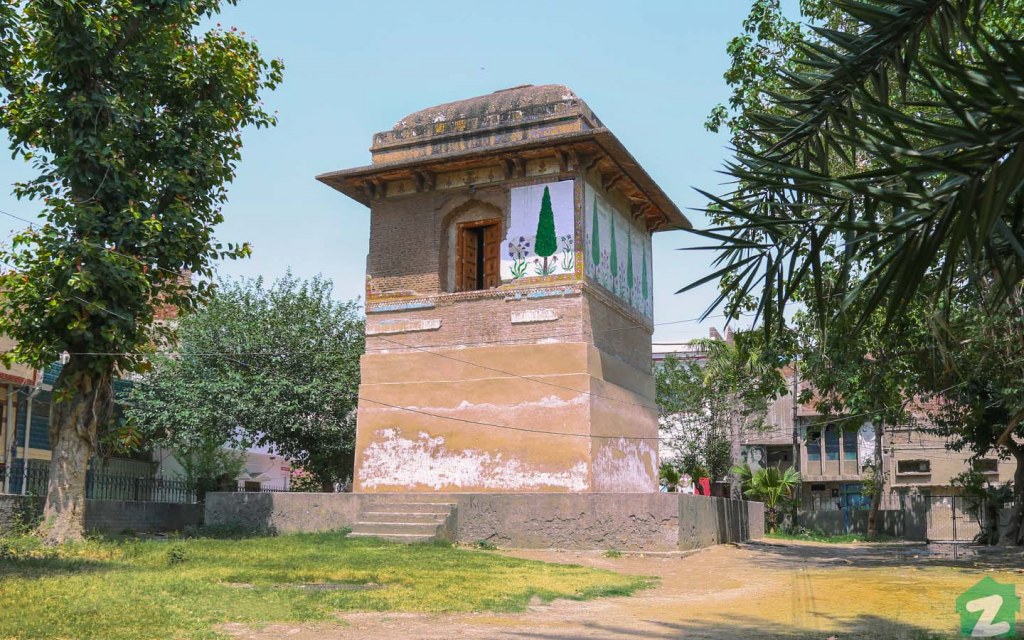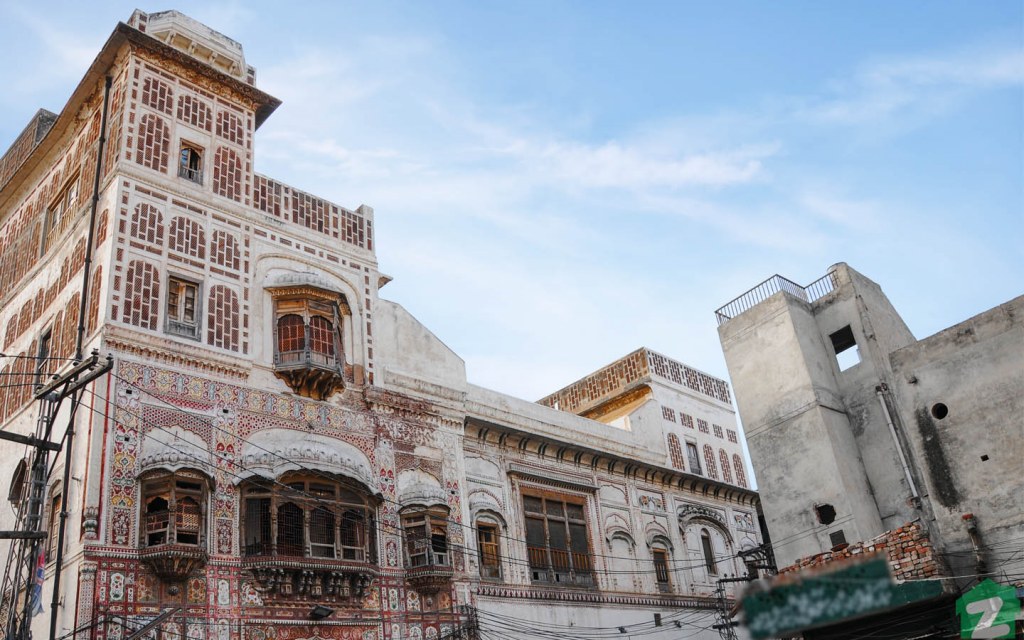Once an imperial city at the centre of the Mughal Empire, Lahore is home to some of the most iconic architectural gems in the entire country, with some dating back hundreds of years. In fact, the historical places in Lahore attract a large number of tourists from all across the world.
However, did you know that the ‘City of Gardens’ has much more to offer than the majestic Shahi Qila, Badshahi Mosque and Minar-e-Pakistan among a few other popular tourist destinations? While all of these famous places in Lahore are a must-visit, especially if you are visiting the bustling metropolis for the first time, there are a few hidden gems that mostly go unnoticed by tourists.
Historical Places in Lahore You Probably Didn’t Know About
Here are some little known historical places in Lahore that may not be as popular among tourists but are certainly worth visiting.
- Tomb of Cypress
- Tomb of Khan-e-Jahan Zafar Jang Kokaltash
- Haveli of Nau Nihal Singh
- Begum Shahi Mosque
- Gulabi Bagh Gateway
Let’s take a look at why you should add these unexplored gems to your Lahore itinerary.
Tomb of Cypress

The Tomb of Cypress, more commonly known as Saruwala Maqbara, dates back to the early 18th century. It is one of the must-visit beautiful places in Lahore for those interested in history and Mughal architecture. Located in the historic town of Begumpura, the tomb once served as a meditation chamber for Sharf-un-Nisa Begum. She was a sister of Nawab Zakariya Khan who served as the Governor of Lahore under Emperor Mohammad Shah. It is also her final resting place.
The tower-like brick monument is believed to have been desecrated during the reign of Maharaja Ranjit Singh. But despite its slightly battered walls and fading motifs, it’s quite easy to see why the Tomb of Cypress is considered one of the last praise-worthy buildings constructed during the Mughal Empire.
The mausoleum, which is square in shape, got its name from the beautiful cypress motifs embellished on its exterior walls. The tile mosaic work on the walls features four green cypresses on each side of the tapering structure, accompanied by colourful blooming flowers. There was once a large garden around the tomb, but it is now surrounded by houses and buildings.
The monument has a chamber at the very top. It is covered by a single dome embellished with glazed tiles adorned with stunning calligraphy. The burial chamber of Sharf-un-Nisa Begum is only accessible via a removable ladder.
Location
If you want to visit this hidden historical place in Lahore, you need to reach Begampura Road while travelling east on Grand Trunk Road. The Tomb of Cypress is located near a locality known as Sharif Park. It is about 200 meters north of another relatively unknown monument, Dai Anga’s Tomb.
Tomb of Khan-e-Jahan Zafar Jang Kokaltash
Located near Royal Palm Golf and Country Club on Canal Bank Road, the tomb of Khan-e-Jahan Bahadur Zafar Jang Kokaltash is yet another historical marvel that mostly goes unnoticed by the tourists visiting Lahore. It was believed to have been built in 1697.
Khan-e-Jahan Bahadur Zafar Jang Kokaltash, whose original name Mir Malik Husain, was a high-ranking officer during the Mughal era. He served as the governor of Deccan, the governor of Allahabad and later as the governor of Punjab. The main structure is octagonal in shape and unlike other buildings constructed during that period, it is made of cut brickwork instead of red sandstone. The tomb itself is built on a raised podium.
While it may have once been impressive, the façade of the structure has suffered greatly during the past centuries. The holes on the dome of the elegant monument suggest it was once embellished with marble though it’s completely bare now. However, the beautiful carvings on the wall and brick masonry is a testament to the fact that it must have been quite extraordinary when it was built.
It is one of the best places to visit in Lahore, especially if you are a history buff.
Location
In order to visit the tomb of Khan-e-Jahan Bahadur Zafar Jang Kokaltash, travel south of Shalimar Link Road from G.T. Road and take a right turn towards Canal Bank Road. You’ll have to make a U-turn on the bridge as the tomb is located on the opposite side.
It is located just a few kilometres away from the tomb of Ali Mardan Khan, one of the relatively popular tourist attractions in Lahore.
Haveli of Nau Nihal Singh

For the locals, it may be one of the most well-known historical places inside the historic Walled City of Lahore. But a lot of tourists miss out on this outstanding piece of architecture. Dating back to the 19th century, this grand mansion was constructed by Maharaja Nau Nihal Singh. He was the grandson of Maharaja Ranjit Singh. The stunning building, which is a jewel in the cultural heritage of Lahore, now serves as the Government Victoria Girls Higher Secondary School.
The haveli is situated near the Lohari Gate in the Walled City. It is also one of the few intact structures built during the Sikh rule in Lahore. The building comprises four storeys along with a basement. Overall, there are 40 rooms in the once-royal residence. The carvings, masonry and overall design of the haveli make it one of the top hidden historical places in Lahore that you must check out on your next trip to the city.
It is important to mention the Walled City of Lahore Authority recently decided to open Haveli of Nau Nihal Singh and Haveli of Asif Jah for tourists. According to a local English daily, trained guides will conduct the tours every Sunday.
Location: Circular Road, Mohalla Sathan, Walled City of Lahore, Lahore.
Begum Shahi Mosque
Maryam Zamani Mosque, more commonly known as Begum Shahi Mosque, is yet another historical gem located in the Walled City of Lahore. Although most tourists are unaware of this magnificent mosque, it is considered to be the inspiration behind the iconic Wazir Khan Mosque.
Mughal Emperor Jahangir built this stunning mosque between 1611 and 1614 in honour of his mother, Begum Maryam Zamani, also known as Maharani Jodha Bai. It is believed to be the oldest remaining mosques from that era. Maharaja Ranjit Singh later used it as a gunpowder factory before it was returned to the Muslims in the mid-19th century.
When it comes to the architecture of the mosque, it has a five-bay prayer chamber that is approximately 130 ft long and 34 ft wide. Moreover, the mosque comprises short domes, three wide arches, a large courtyard with an ablution pool and two gateways. There used to be a third gateway that did not survive the test of time.
Meanwhile, the stunning interior of Begum Shahi Mosque features extraordinary fresco artwork with floral and mosaic design along with breathtaking calligraphy.
Location
This historical place in the Walled City of Lahore is located inside the old Masti Gate. It was once visible from the Akbari Gate of the Lahore Fort. However, it is now hidden behind various shops and houses that have taken over the area.
Gulabi Bagh Gateway

As the name suggests, Gulabi Bagh Gateway once served as the entrance to a vast garden. A Persian noble named Mirza Sultan Baig built it in 1655. In 1671, a tomb for Emperor Shah Jahan’s wet nurse, Dai Anga, was built there. However, centuries later all that is left of this historic garden is the narrow strip comprising walkway and some greenery that leads to the impressive mausoleum.
The gateway itself is a double-storey structure with brilliant mosaic work. Though unlike other monuments from that period, it does not have a dome. The structure includes covered chambers for guests and an internal staircase that leads to the first floor.
The façade of his hidden historical place in Lahore is embellished with multi-coloured tiles that illustrate beautiful floral patterns and geometric shapes. Gulabi Bagh Gateway is considered one of the finest examples of mosaic work from the Mughal era.
Meanwhile, the Tomb of Dai Anga, which was built on a raised plinth in the centre of the garden is rectangular in shape. It also has a large dome and consists of eight rooms in total.
Location
For those who want to visit Gulabi Bagh Gateway or Dai Anga’s Mausoleum, it is located on the northern side of G.T. Road near the University of Engineering and Technology, Lahore.
So, how many of these historical places in Lahore have you visited already?
If you want to share any other hidden architectural gems in Lahore or other cities, send us an email at blog@zameen.com. You can also head over to Zameen Blog, the best lifestyle blog in Pakistan, for more information about major tourist attractions and things to see in Lahore.



